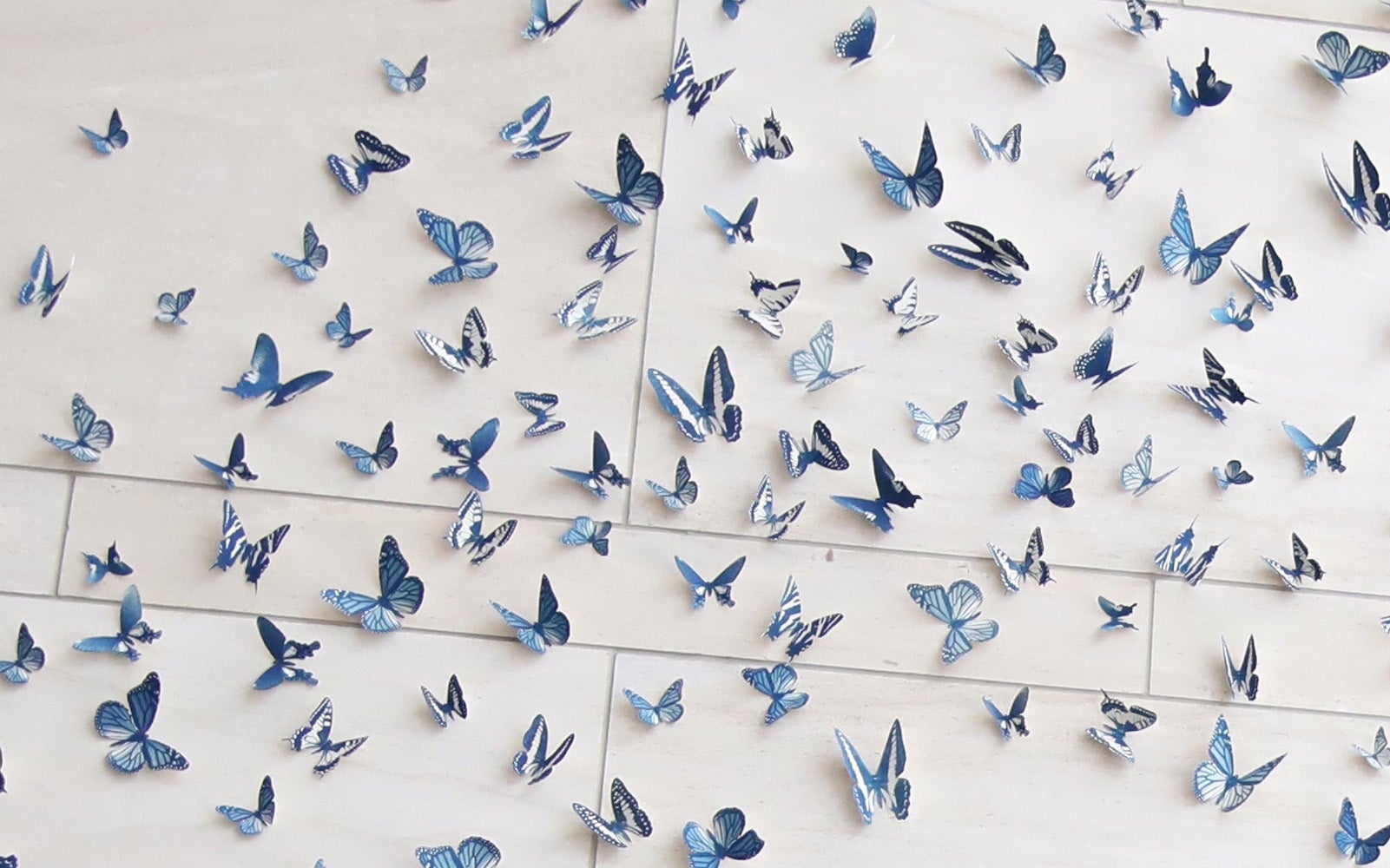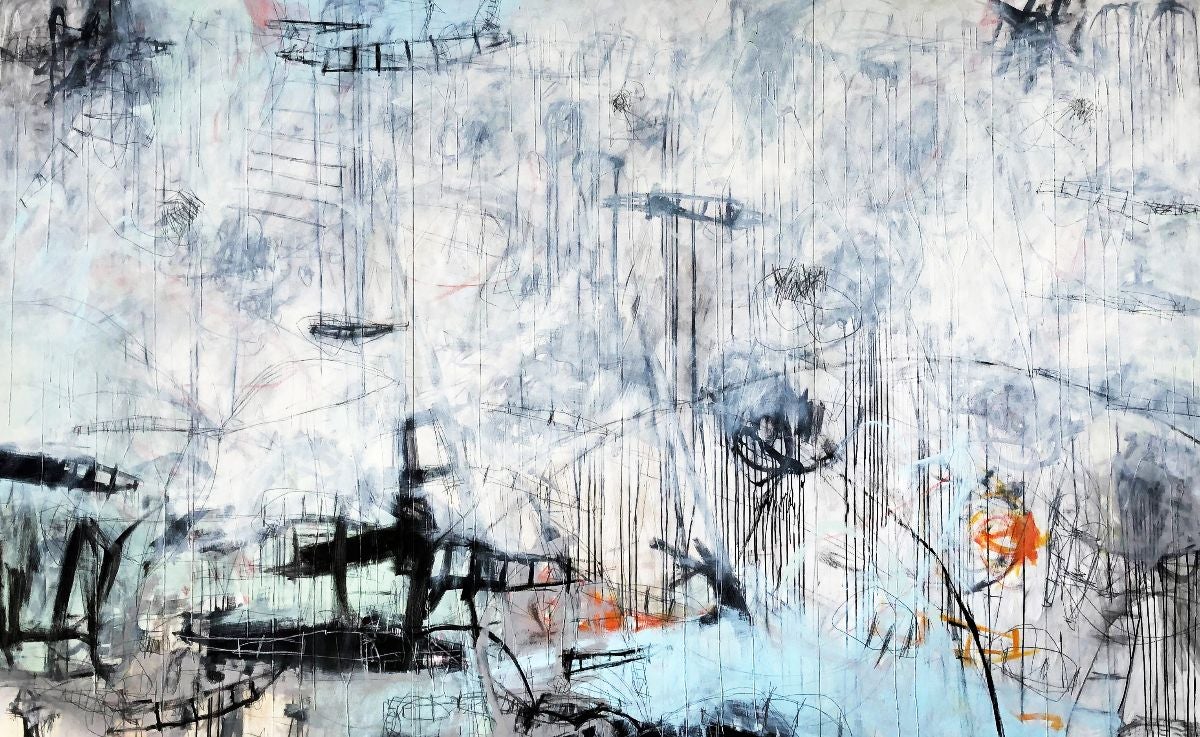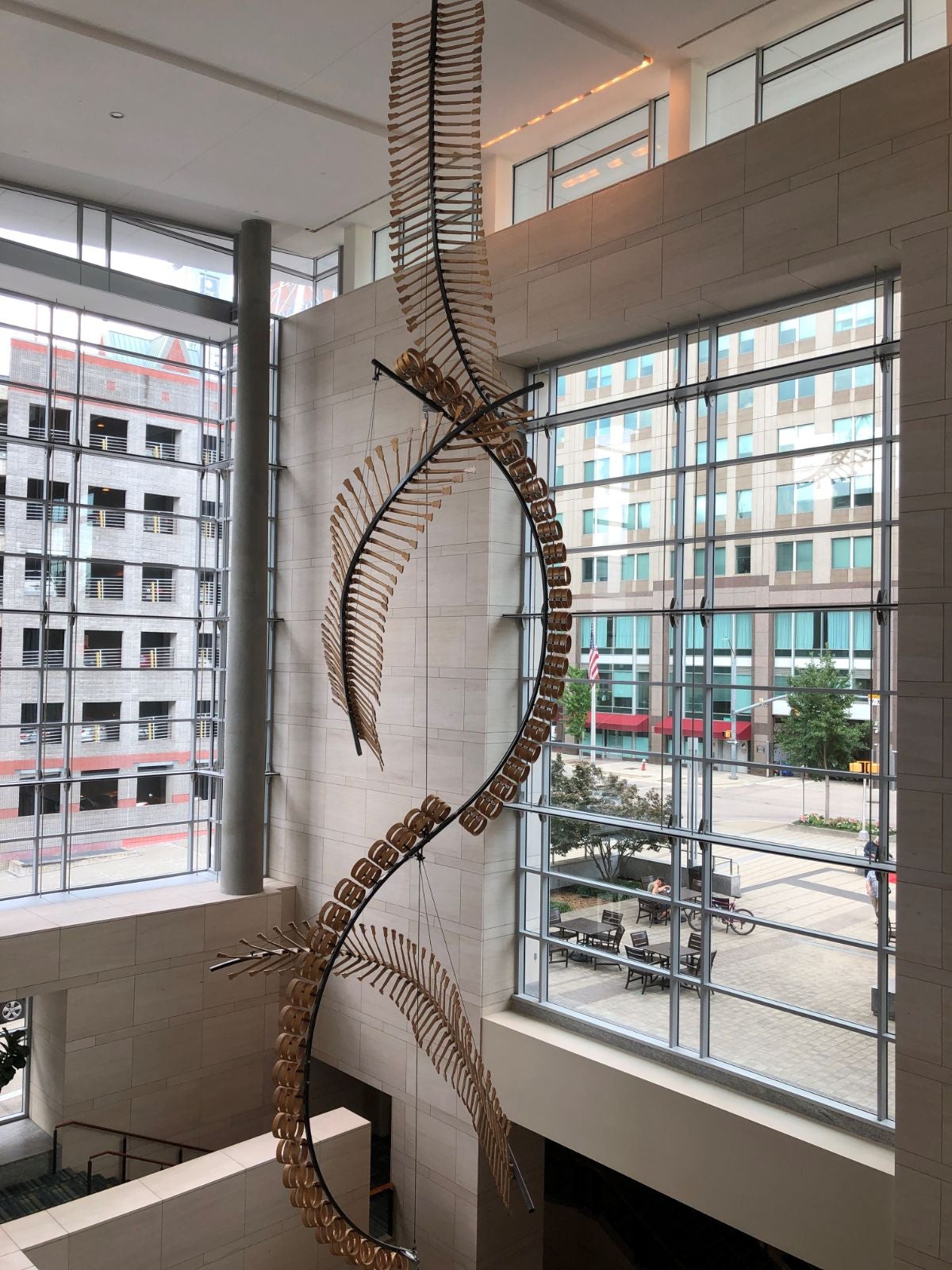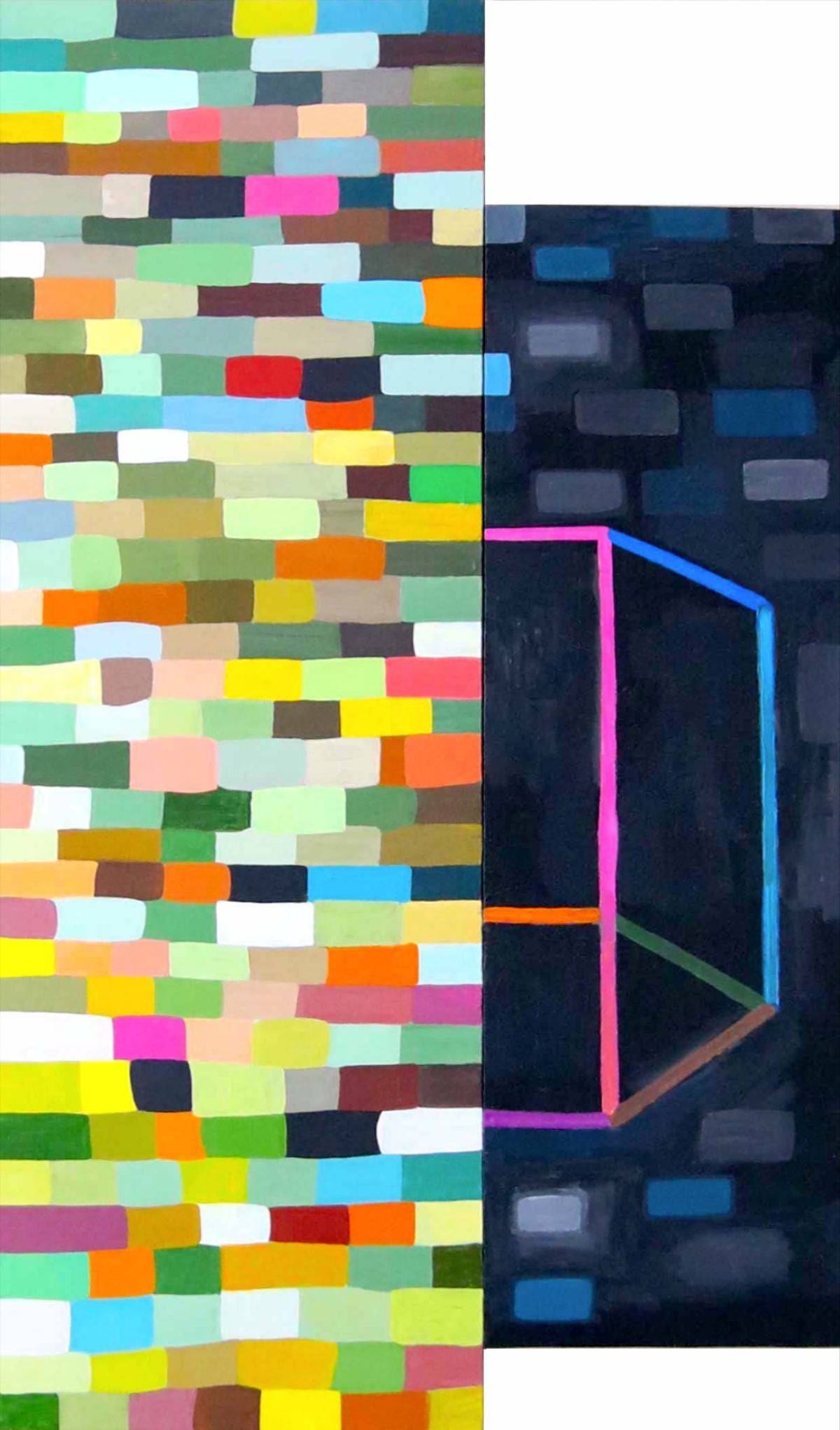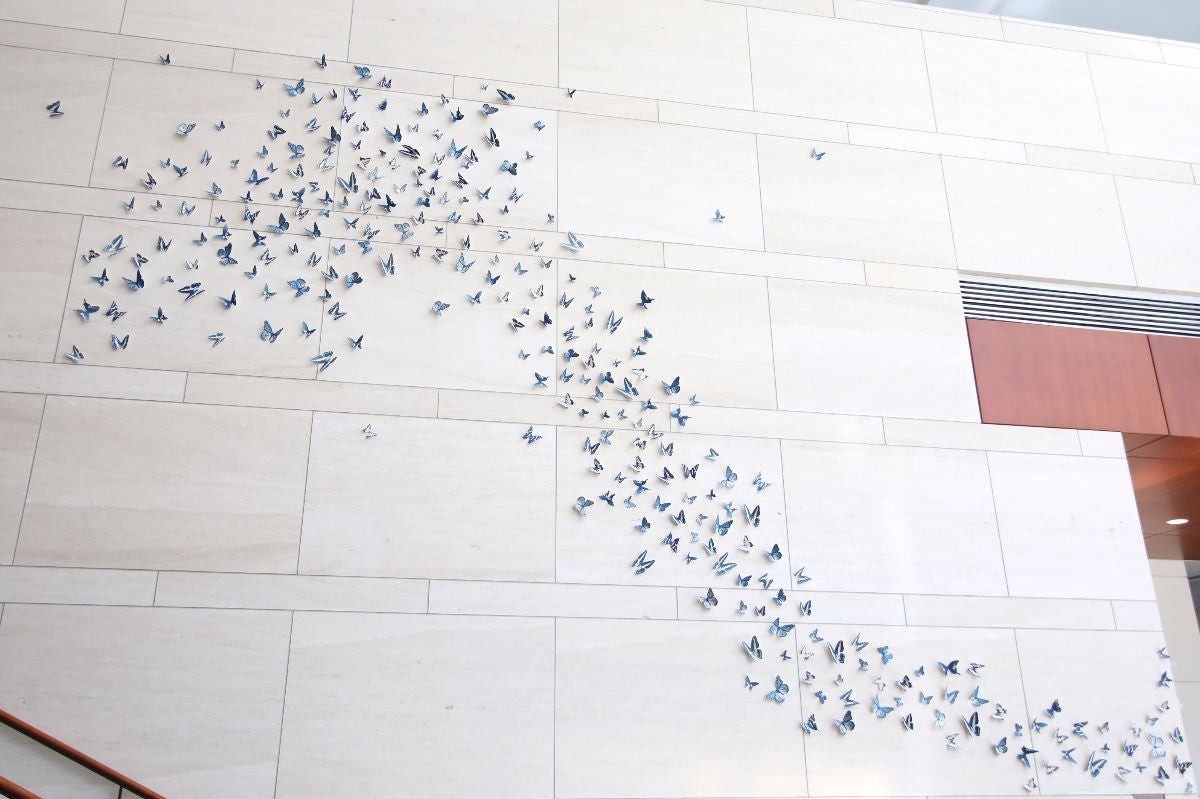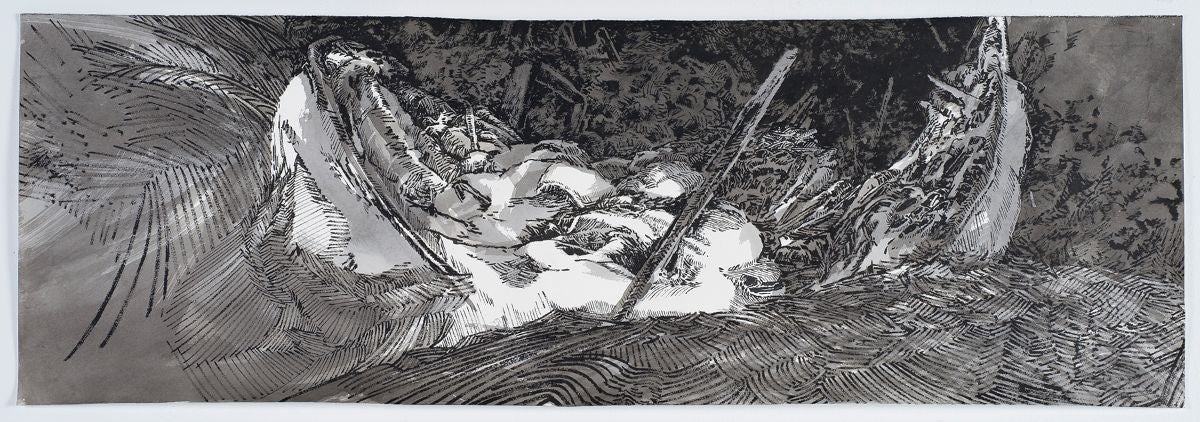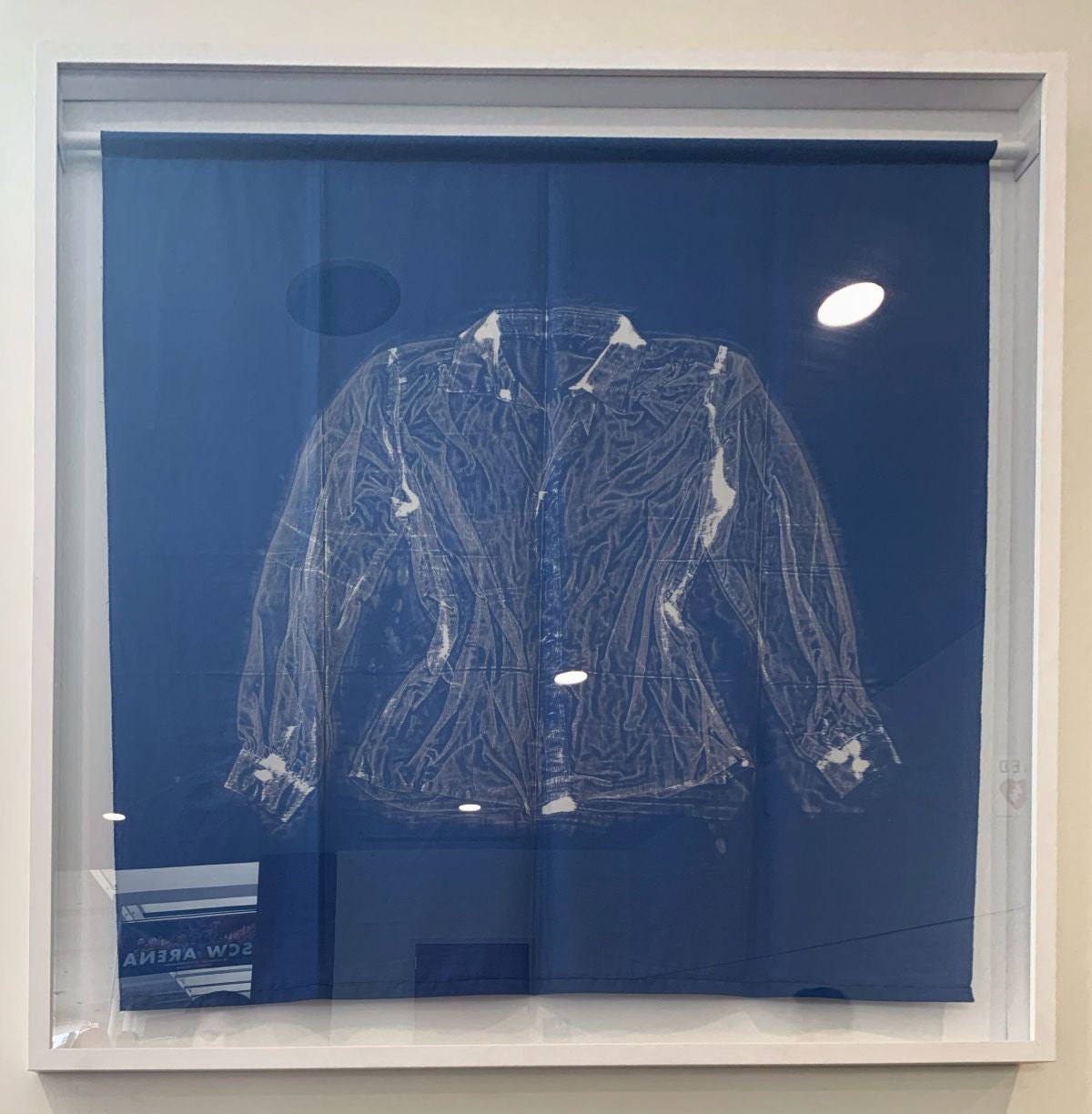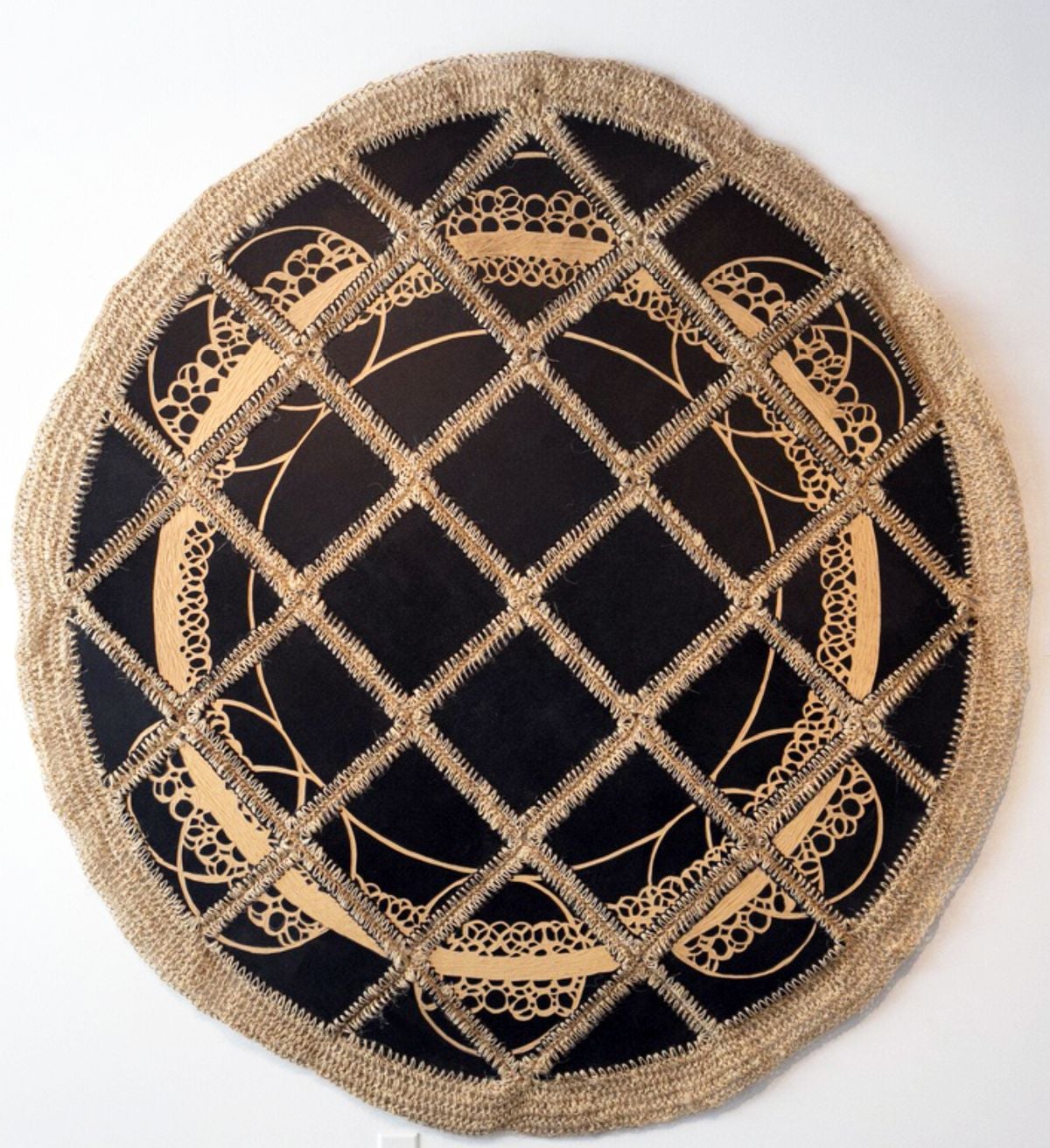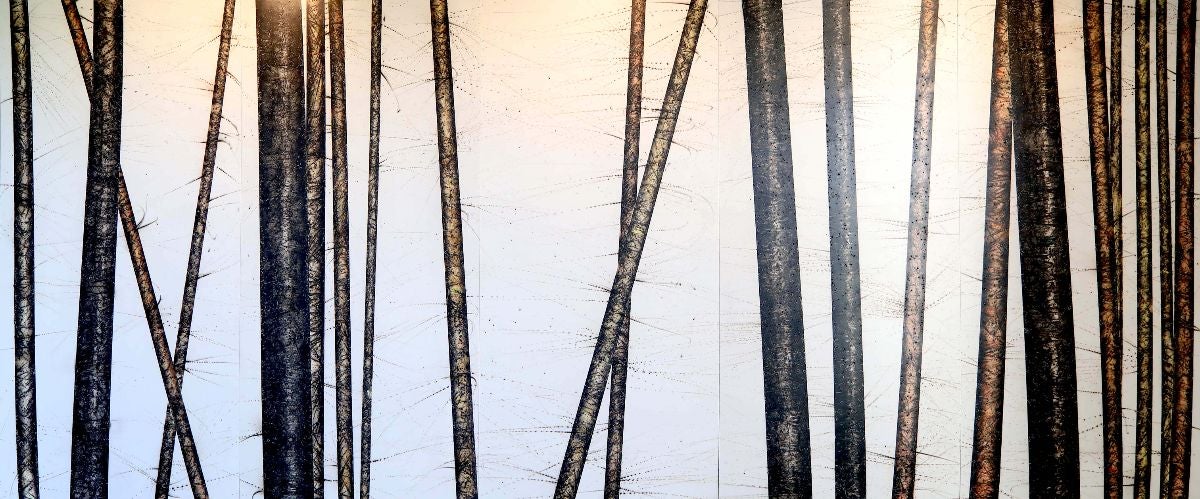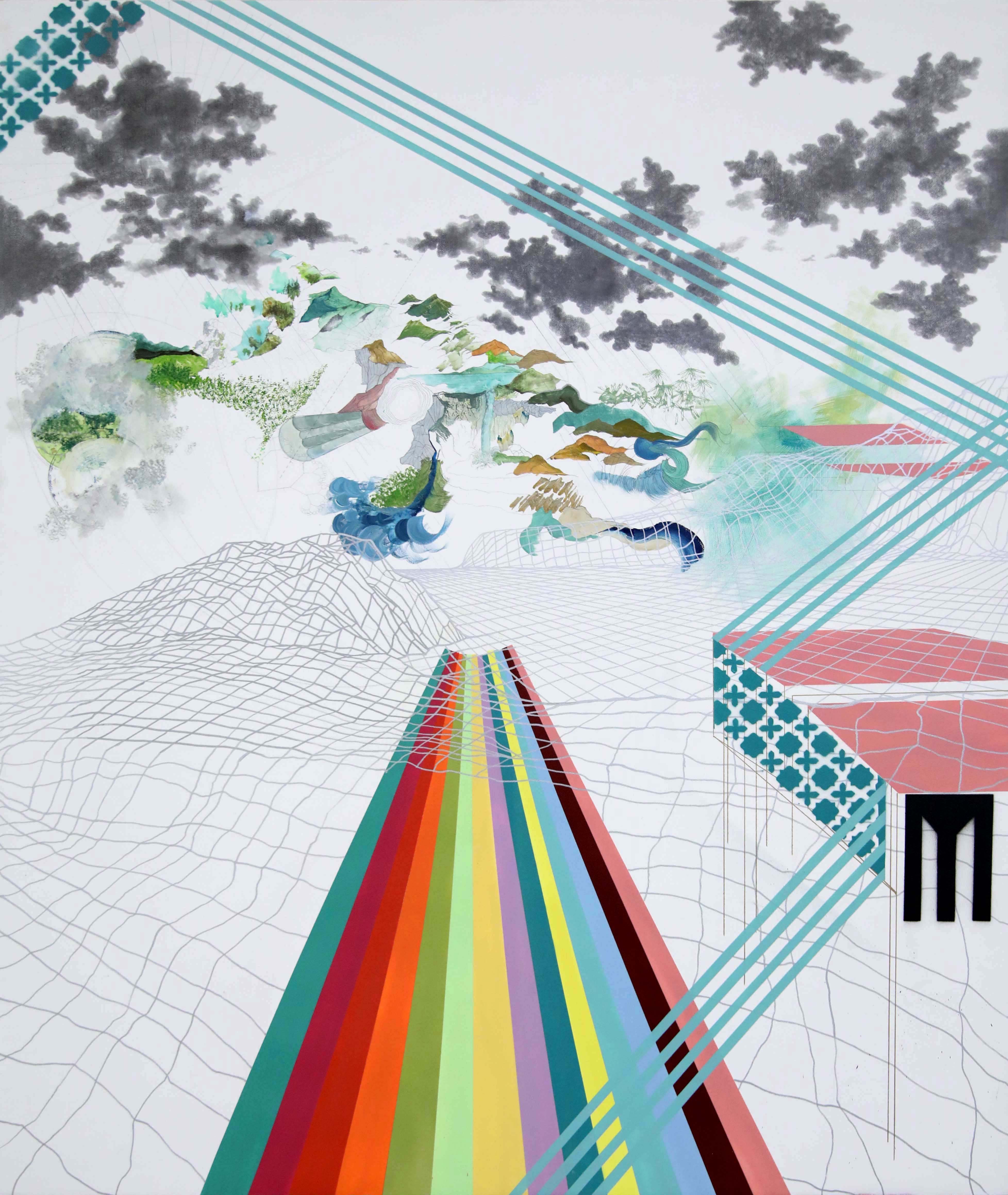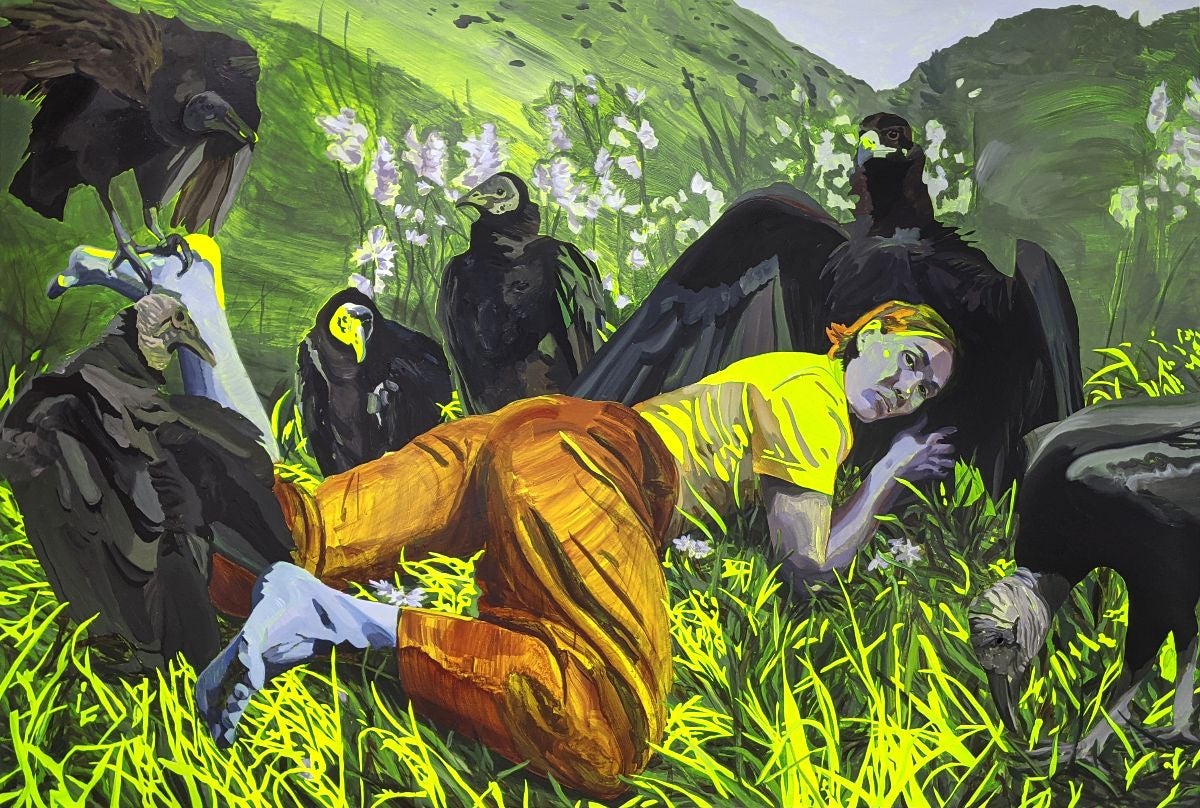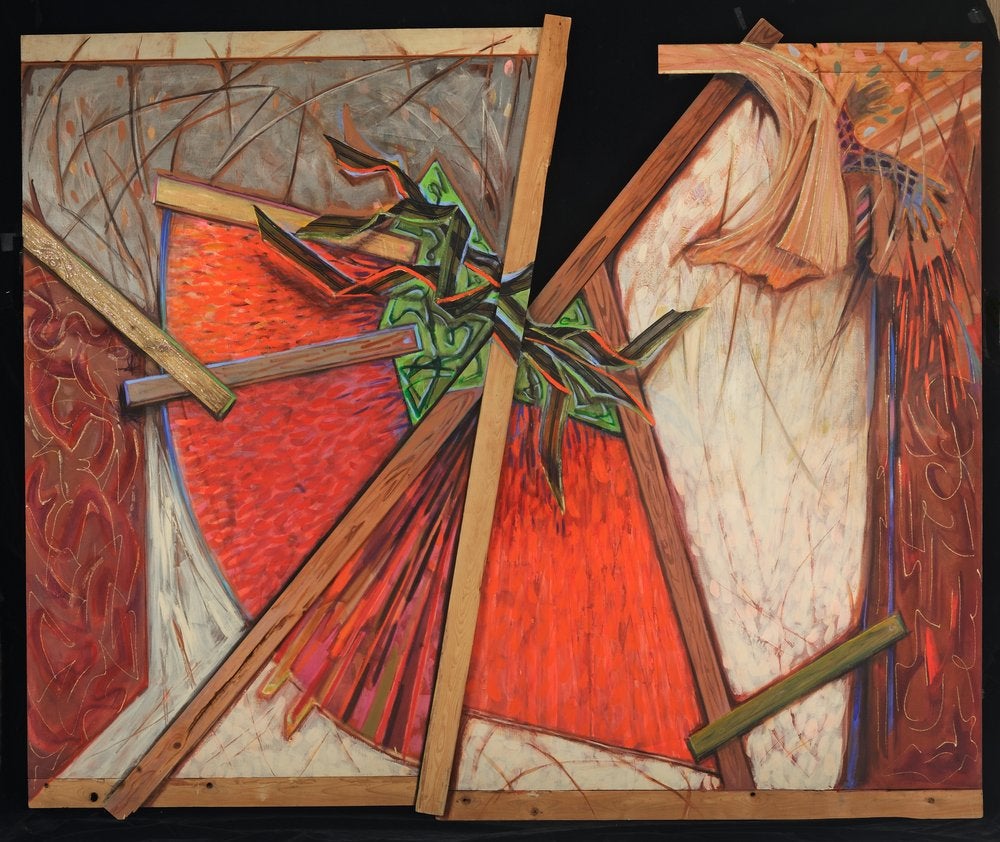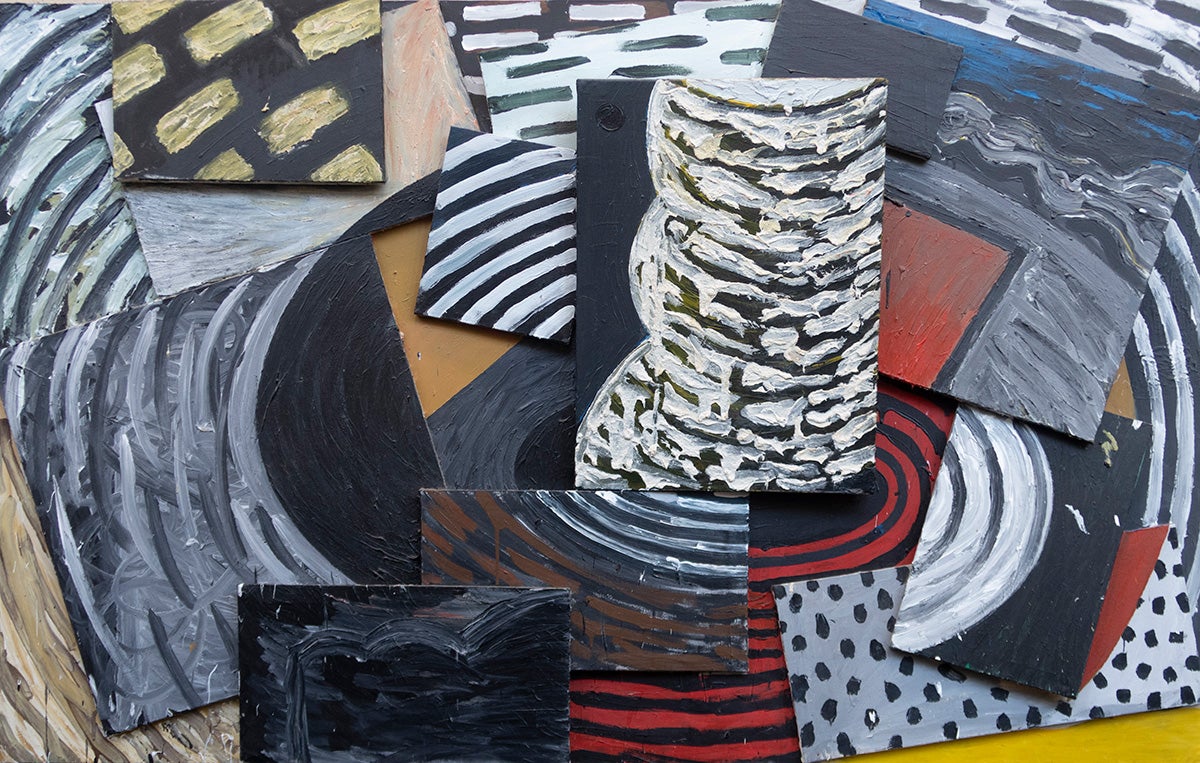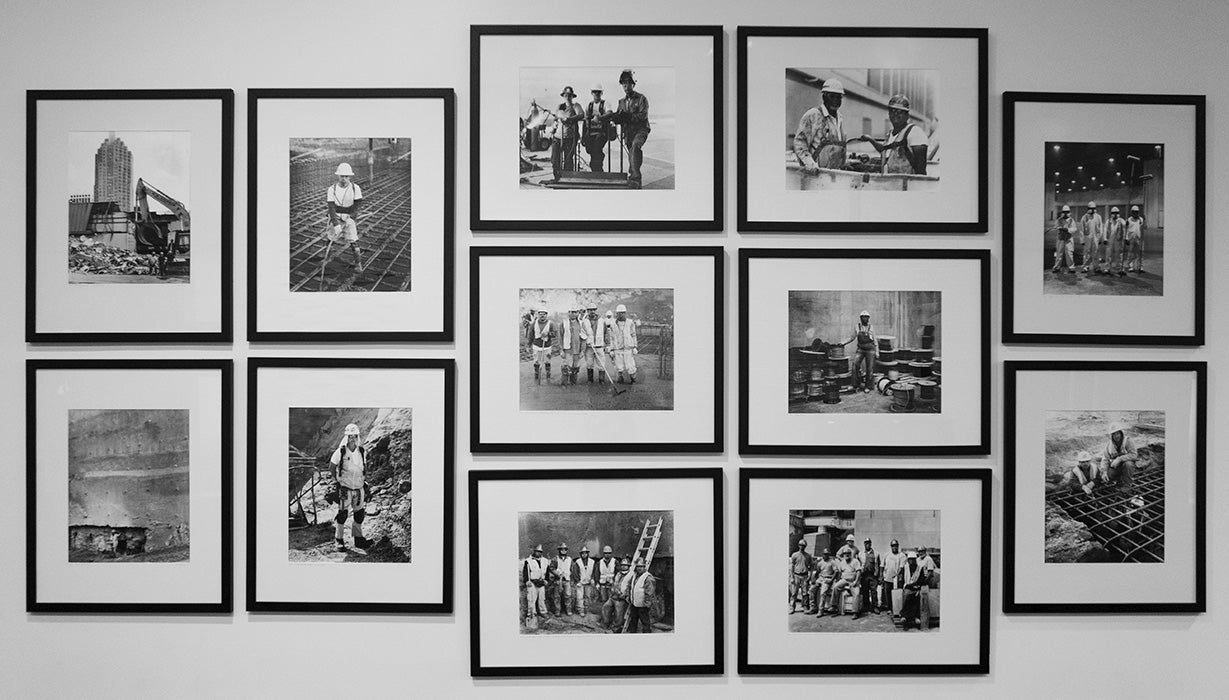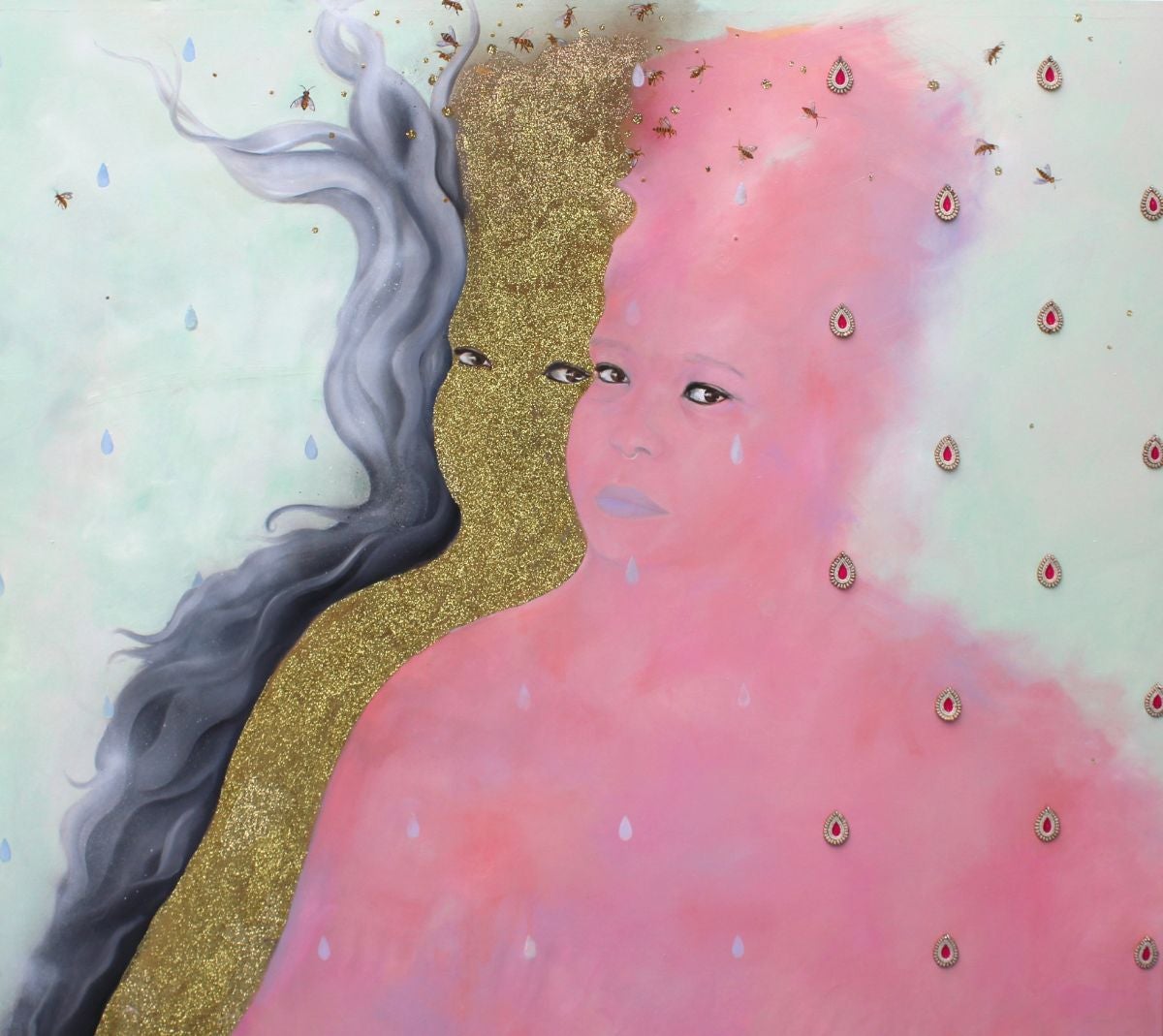
Liminal Being(s)
Saba Taj
Oil paint, glitter, appliques, gold leaf, spray paint on canvas
Location: Grand Staircase
Queer people of color, particularly the queer Muslims depicted in the artist's work, are often defined by the oppressions they face rather than the vibrant, liberating spaces they create. The artist explores liminality through queerness and intersectionality alongside the Islamic concept of barzakh, which represents the in-between—neither one thing nor the other, but both.
In her mixed-media paintings, she portrays her subjects in imaginative representations of barzakh—magical and full of possibility. They look back at the viewer, emerging from and blending with dreamscapes adorned with glitter, rhinestones, and beads—symbols of their queer and diasporic heritages. Her portraits celebrate the in-between and those who occupy it, exploring the rich spaces beyond binaries.
